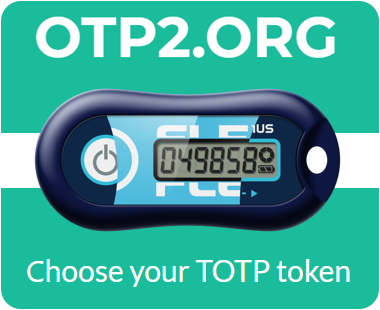
As a cybersecurity professional, there is a serious vulnerability that I would like to bring to your attention; recently identified in Microsoft’s Multi-Factor Authentication system. Although now patched, the flaw was initially exploitable and had it been leveraged could have allowed unauthorized access to millions of user accounts including critical services such as Outlook, OneDrive, Teams, and Azure Cloud.
What makes this breach particularly alarming is its scale—it could potentially affect over 400 million paid Office 365 accounts. Attackers managed to remove a critical second factor by exploiting just one vulnerability; the exploit removed what is seen as one of the more robust defenses against account takeovers. Exploiting that vulnerability required no user interaction and left no immediate warning signs of exploitation. In other words, victims could remain completely unaware that their accounts were under attack until it was too late.
Inside the Technical Faultlines of the MFA Vulnerability
The core issue was how Microsoft implemented time-based one-time passwords (TOTP) for MFA. In some vulnerable configurations, a code that should have had a validity period of just 30 seconds was sometimes valid for up to three minutes, which significantly increased the likelihood of a brute-force attempt succeeding. Making things worse, poor rate-limiting controls allowed attackers to test multiple TOTP codes in a very short amount of time and in parallel.
In practice, an attacker with some skill could open several parallel login sessions and keep trying TOTP codes until they hit one. After about 70 minutes, their chances of breaching an account crossed the 50% threshold. More worryingly, the attack was stealthy—no alerts or suspicious login notifications were triggered, leaving targets completely in the dark about the ongoing compromise.
“When MFA fails due to such a vulnerability, it stops functioning as a protective measure and instead becomes an entry point for malicious actors,” explained James Scobey, CISO at Keeper Security. From there, attackers can perform reconnaissance, identify the most valuable assets, and establish hidden backdoors—such as reverse shells—for persistent root-level access. That persistence would, in effect, bypass any future authentication requirements, and hand intruders almost complete control over critical infrastructure and data.
Microsoft’s Response Fortunately, Microsoft responded quickly when the Oasis Security research team reported the vulnerability. It had a temporary mitigation in place by July 4, 2024, and fully deployed the permanent fix, which includes additional rate-limiting measures, by October 9, 2024. These have significantly narrowed down both the time window and tolerance on brute-forcing codes—returning MFA into a far more reliable condition. The industry is trending toward better authentication: for example, Google Cloud just announced plans to make MFA mandatory by 2025, further amplifying the current emphasis on more resilient security baselines.
Elevating Authentication: RADIUS, Hardware Tokens, and Passwordless Methods

If this incident is any guideline, MFA is way better than just passwords, but it should be more in the line of being the baseline of security rather than the final frontier. Organizations must now start looking beyond traditional OTP-based MFA for more advanced means of authentication.
short for Remote Authentication Dial-In User Service, is a centralization of authentication controls in order to make multi-factor integration easier. Radius authentication helps in keeping the same security policies for all systems and applications by managing access from one point.
Hardware tokens are a physical factor in generating one-time codes, so the hardware tokens themselves are intrinsically resistant to phishing and brute-force attempts. Unlike soft tokens or SMS-based codes, it is difficult to intercept or clone the hardware tokens remotely, and this greatly reduces the chances of compromising the credentials.
Passwordless methods rely on cryptographic keys, device-based credentials, or biometrics. By eliminating shared secrets-whether passwords or OTPs-the organizations can drastically reduce common attack vectors. This improves security but at the same time user experience, since fewer steps often are needed for passwordless authentication than for traditional ones and yet more protection is given.
Why Embrace These Advanced Authentication Strategies?
Reduced Attack Surface: RADIUS and hardware tokens make it harder to abuse timing windows or brute-force/guess codes, with passwordless solutions further reducing reliance on secrets that may be either brute-forced or phished.
Streamlined Management—Simplified with centralized protocols like RADIUS and strong physical factors like hardware tokens, there is an ease of managing user access.
Future-Proofing Security: As threats evolve, so must defense strategies. Adoption of advanced, modern authentication methods is helping organizations stay ahead of emerging risks.
Key Takeaways for Organizations Relying on MFA
While the vulnerability in Microsoft has been dealt with, it really highlights the fact that constant vigilance is needed. MFA must be one of the main authentication pillars but cannot work alone. Continuous improvement and adaptation are essential.
Advice from an Expert in Cybersecurity: Keep MFA as one of the base defenses. Although it’s not bulletproof, it still raises the bar very high to unauthorized access.
Configure monitoring and alerts: Alerts should be set up for anomalous second-factor failures. Discovering brute-force patterns or other abnormal login behaviors can prevent a small crack from becoming an open door.
Routine security audits: Review security configurations regularly, reduce code validity windows, and increase rate limits. Consider enabling more modern MFA methods, RADIUS-based controls, and hardware tokens if needed.
Beyond Basic MFA: Embracing Passwordless Strategies and Modern Security Frameworks
“MFA is better than credentialed access alone, but it should be thought of as a baseline,” adds Kris Bondi, CEO of Mimoto. “Even when MFA works correctly, it only authenticates a moment in time, not the true identity of the person behind the endpoint.” This point is further echoed by Jason Soroko, senior fellow at Sectigo: “Any form of shared secret-based authentication is inherently vulnerable. Organizations need to move on from traditional MFA and toward passwordless solutions backed by modern security frameworks.”. Looking Ahead To fight these evolving threats, this incident is only a reminder that the attackers are always improving.
Organizations and individuals must be closed in the direction of next-generation authentication strategies, integrating RADIUS and hardware tokens where possible, and consider migration toward passwordless methods that eliminate reliance on easily compromised secrets.
Combining cryptographic proof-based authentication with intelligent risk assessment and constant updating of security measures will allow organizations to strengthen their defenses against threats that may arise tomorrow. The road ahead is clear: address known vulnerabilities proactively, consider MFA as a starting point rather than the end, and invest in technologies that strengthen the whole authentication ecosystem. Protecting our digital ecosystem is a never-ending job. Proper tools and a positive mindset are required in order to be able to stay one step ahead of the adversaries and ensure better cybersecurity for digital operations in the coming years.




